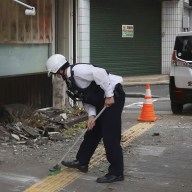There are times when a personal check doesn’t cut it. You may havean important expense, such as a used-car purchase or a rent deposit, but the person you’re payingwon’t accept that little piece of paper from your checkbook. The recipientmay ask insteadfor some form of guaranteedpayment. If you’re not keen on carrying around large amounts of cash, your other options include a money order or a cashier’s check.
The $1,000 question
Money ordersgenerally are cheaper and therefore better for payments under$1,000. Cashier’s checks, sometimescalled official checks, are often better for larger amounts. Many businesses won’t issue a money order above $1,000. So if you have to write a check for more thana grand — say, $5,000 to buy a used car — a cashier’s check may be your bestoption.
Cashier’s checks can be written for less than $1,000, but theyusuallycost more than money orders. Money orders can sellfor less than $2, while cashier’s checks in any amount often cost around $10. Wal-Mart has some of the cheapest prices for money orders, charging 70 centsfor amounts upto $1,000. The U.S. Postal Servicecharges between $1.20 and $1.60, depending on the amount. Banks oftencharge around $5. Though cashier’s checks cost more, somebanks and credit unions waive the fees for customers withpremium accounts. It’sworth askingyour financial institution if you qualify.
The amount of the check may be the most important factor when choosingbetween a money order and cashier’s check. But there are other differences betweenthem.
Where to buymoney orders and cashier’s checks
You can buy money orders atpost offices, retail stores, banks, money transfer outlets and elsewhere.Going to asupermarket to buy milk? You could also pick up a money order at the customer-service counter. Cashier’s checks, on the other hand, usually are available only fromfinancial institutions.
If you’re hoping to buy either one online, you won’t have much luck. Issuers generally require that you visit a physical location to buya money order or cashier’s check. You could ask your recipient if you could send money online instead. Protections ofmoney orders and cashier’s checks
If you lose a cashier’s check or money order, or if it’s stolen, you can take steps to recover your money. You’d generally need to go to the issuer with your receipt and ask for a refund. That makes either optionbetter than carrying cash. But cashier’s checks offer a bit more protection, since the financial institution fills out the “pay to” line,instead of the purchaser.Compare that with writinga money order, which is similar to writing a check. The purchaser has tofill in the receiver’sname. If the purchaser loses the money order before it’s filled in, anyone couldcash it.And once someone cashes that money order,you more than likely won’tget your money back. If a money order or cashier’s check is cashed fraudulently,the purchasercouldcontact policeand work through the legal system to try to recover the money.
Since it already has thepayee’s name typed on it, a cashier’s check provides an extra level of protectionfor both the sender and the receiver. And an official check drawn up by a financial institution may seem more credible to a receiver than a money order fromChucky’s 24-Hour Market.But either option is a good way to offer guaranteed payment. Margarette Burnette is a staff writer at NerdWallet, a personal finance website. Email: mburnette@nerdwallet.com. Twitter: @margarette. The article Money Order vs. Cashier’s Check: How to Decide originally appeared on NerdWallet.
















